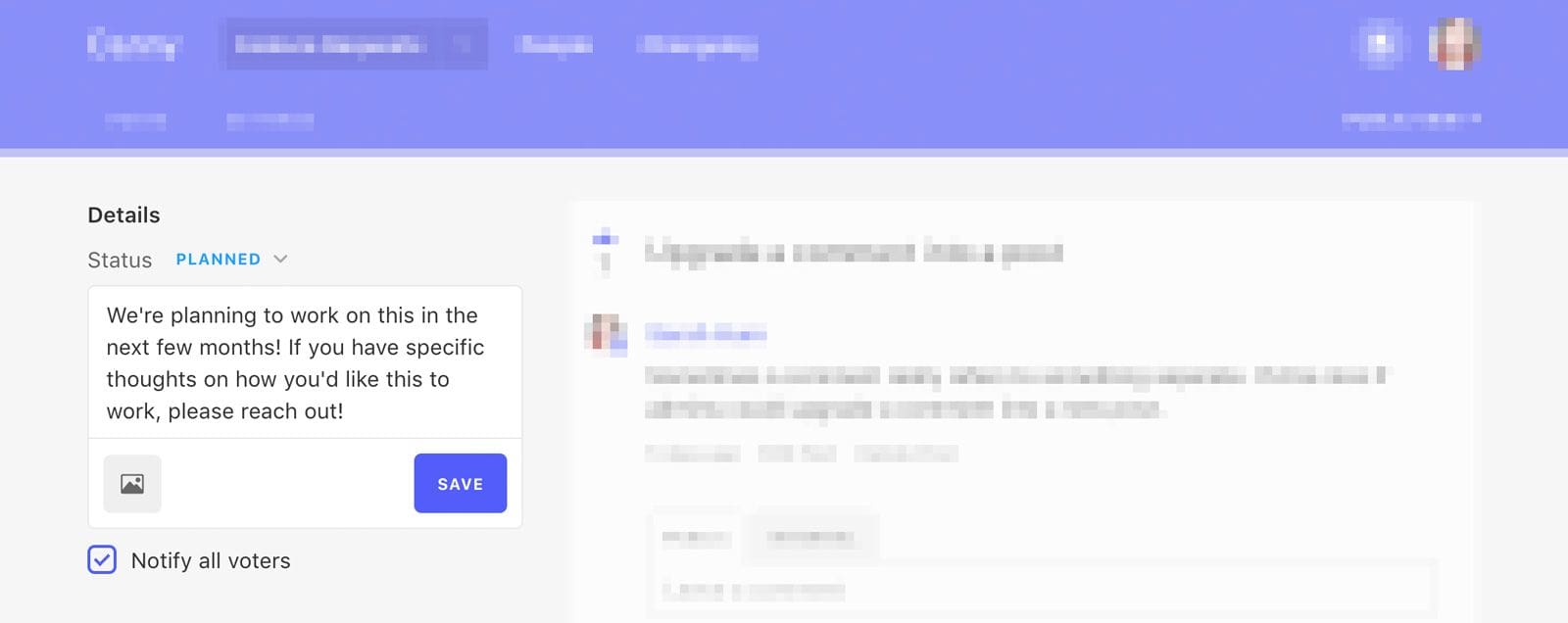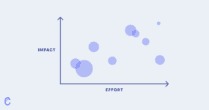Canny is a customer feedback tool
We help your team make better product decisions powered by customer feedback. With these best practices, you can use Canny to its fullest.
Register for your free account today!
Should we respond to all requests?
One of our goals with Canny is to reduce the work required for your team to get insights from feedback.
For those getting feedback from a lot of people, this isn’t easy. You can show that you’re listening without spending all your time crafting responses. You can find a balance.
We follow this general rule:
Responses like “thanks for the feedback” are nice, but don’t add value to you or the person who gave feedback. It’s also time consuming to respond to every request.
Here are some examples of when a response is called for:
When you need more context
Oftentimes, people can be vague about their requests or problems. Usually, you need to dig deeper to understand a request.
Many customers will phrase their request as a solution:
You need to distill their request into an actual problem. Just ask them straight up:
Without asking and just building exactly what they ask for, you are wasting your team’s time. Is there a simpler way to solve their problem? Can a different feature solve their problem?
The worst thing would be to build out the feature only to find out it’s not solving the original problem.
The work you put upfront will come in handy. When your team is ready to build out that feature, you’ll have all the additional context you need.
Be timely with these follow-ups if you can. It’s best to ask for extra context when it’s fresh in the mind of your user.
When you need to set expectations
In general, your users should know that just because something has the most votes, does not mean it will be built. Most customers will understand this, some will not.
In those cases, we respond with something like this:
A nice thing about Canny is that it helps sets expectations for less popular posts. Your customers can see that a post with 10 votes is probably less likely to be built over a post with 100.
Another common question you might hear from customers is:
In most cases, you probably don’t want to give a specific date. As we all know, unexpected things are bound to come up and create delays.
How to correctly estimate a project's completion date:
1. Analyse the factors involved and come up with a rational figure of time
2. Wrong.— I Am Devloper (@iamdevloper) December 31, 2013
Ideally, you under promise, over deliver—not the other way around. As a general rule, multiply your estimates by three. Don’t make promises you can’t keep.
Most of the time, we don’t give a specific estimate:
The great thing about Canny vs. email is that you can post an update once that everyone can see.
When you have updates to share
This is the fun part! Your customers spent time to give your team feedback—close the feedback loop when you can. Your customers will appreciate it, and it will reflect well on your company brand.
Canny has built-in status updates for certain phases of a request. They are great checkpoints to use to keep your customers engaged and excited.


- Under Review: We’re considering building this
For times when you might need more insight on a request. Setting an “under review” status gives it a bit more visibility so you can get more feedback before deciding to prioritize something. - Planned: We’re going to build this
Use this time to dig in to customer use cases that will help you scope out a project. Doing research early ensures the product team has everything they need to execute. - In Progress: We’re building this now
Your customers will love seeing this status! If you want to run a beta test, this might be a good time to ask if people are interested in participating. - Complete: We’ve built this!
The ultimate status—celebrate your new update! You’ve successfully brought something from feedback, to roadmapping, to completion. Let your customers know by changing the status and updating your Canny changelog.
Since these updates stay within Canny, your customers have a single source of truth. They can leave their votes for automatic updates.
Strike the right balance
Focusing on these high-impact moments creates a good balance between responding to nobody and responding to everybody.
Of course, it would be lovely if you could give all your customers a response. However, that comes at a cost. At scale, responding to feedback can become a full time job. With Canny, you can minimize this effort while still getting valuable insights.

Your customers will definitely appreciate your effort to hear them out. Your business will benefit from building an informed product. Win-win!













